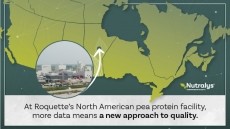News In Brief
FDA asks experts to review seafood safety for children through health equity lens

“We know from our analysis of usual dietary intake that mean intakes of seafood are low in the general population. However, we also understand that specific segments of the population have seafood intake that is unique form the general population,” such as Native Alaskans, Asian Americans and those in lake communities, Kellie Casavale, senior science advisor for Nutrition Center for Food Safey and Applied Nutrition at FDA, told experts with the National Academies of Science, Engineering and Medicine tasked last fall with reviewing the role of seafood consumption in child growth and development.
She explained that while FDA and EPA “aim to acquire information that can allow us to review our advice about eating fish through the lens of exposures and needs of the general population,” the agencies also are curious about “these diverse population groups so that we can determine if our advice indeed supports … all population groups, or if there are some gaps that we could actually address.”
To ensure more equitable guidance about the relationship of seafood consumption and child growth and development, Casavale asked the committee to systemically review not only questions about exposure to chemical contaminants and nutrients from seafood and their impact on the body, but also a series of “sub questions … intended to elucidate what the available evidence is within the evidence based on inequities in nutrient and common contaminant exposure,” including “how the relationship between seafood intake and the outcomes may differ or the mechanism of action may be altered by social, economic, health or environmental disadvantages.”
Specifically, the committee is tasked with answering:
- What is the exposure to nutrients and chemical contaminants from seafood before and during pregnancy, lactation and childhood? And within this question whether there are inequities (i.e. differences due to social, economic, health and environmental disadvantage) in nutrient and chemical contaminant exposures from seafood before and during pregnancy, lactation and childhood?
- What is the relationship between seafood consumption (the exposures in question one) during pregnancy, lactation and childhood and growth and development in the child. In addition, how does the relationship between seafood consumption during pregnancy, lactation and during growth and development of the child differ by social, economic, health and/or environmental disadvantage (e.g. race/ethnicity and income status, higher cumulative exposure to environmental stressors, pre-existing disease burdens, etc.)?
- What are the biological mechanisms of actions, single actions, interactions, compound effects or synergistic effects of nutrients and chemical contaminants from seafood in the human body that relate to child growth and development? How are biological mechanism of action of nutrients and chemical contaminants from seafood altered given social, economic, health and or environmental disadvantage?
- And finally, what other evidence on diet or other exposures should be considered within the context of the conclusions for the questions above about the associations of seafood intake to childbirth and development. Within this question, the committee is asked to consider what other evidence on diet or other exposures related to differences by social, economic, health and/or environmental disadvantage should be considered within the context of conclusions about associations of seafood intake to child growth and development?
The answers to these nuanced questions will be used by FDA, USDA, EPA and other government agencies to update current advice about eating fish for children and those who are pregnant or breast feeding. This in turn will impact other programs, such as federal food and nutrition assistance programs, including the special supplemental Food Assistance Program for Women, Infants and Children (WIC).
Review called for by FDA’s Closer to Zero Action Plan
The review is part of FDA’s larger Closer to Zero Action Plan for reducing the exposure of children to mercury, arsenic, lead and cadmium from foods – an issue that was thrust into the spotlight when a congressional report released in the spring of 2021 alleged widespread heavy mentals in baby food.
In soliciting the review of seafood, FDA stressed that seafood is part of a healthy eating pattern and provides key nutrients during pregnancy, breastfeeding and early childhood development of the brain, spinal cord and immune system.
But, it added, seafood also is the primary source of mercury, which can damage nervous systems and which poses a more significant threat to young children due to their size and ongoing development.
Given the importance of the health implications of seafood consumption and children’s health, the committee is tasked with a quick turnaround with a targeted publication date of their report within about 18 months.





















